Yummly Health Program
Develop a healthy eating program to help Yummly users adopt a healthier cooking lifestyle during the pandemic.
Concept | Ideation | Prototyping

Company
Yummly
Team Breakdown
Product Director, Engineer Manager, Data Manager, Content Director
Duration
2 months
Key Roles
Planning, research, strategy, prototyping, testing
Company Overview
Yummly is a content aggregator that delivers all things recipe-related such as ingredients, articles, and short-form videos. Apart from content, Yummly also offers features such as shopping carts, and meal planners to help users, find, plan, and cook their next meal.
Pandemic Emergence
COVID-19 brought an unprecedented impact to Yummly, as shifting consumer behaviors led to a surge in home cooking. With more people working from home, data showed a significant increase in recipe traffic, as users sought inspiration for meals, experimented with new cuisines, and looked for ways to make home-cooked meals more convenient.
Objective
I was tasked to investigate the sudden demand for recipes during Covid-19 to explore new premium product opportunities for Yummly users.
Data Insights

User Insights
I conducted five 45-minute one-on-one interviews with Yummly seed users to explore the impact of COVID-19 and gathered insights into healthy eating behaviors.
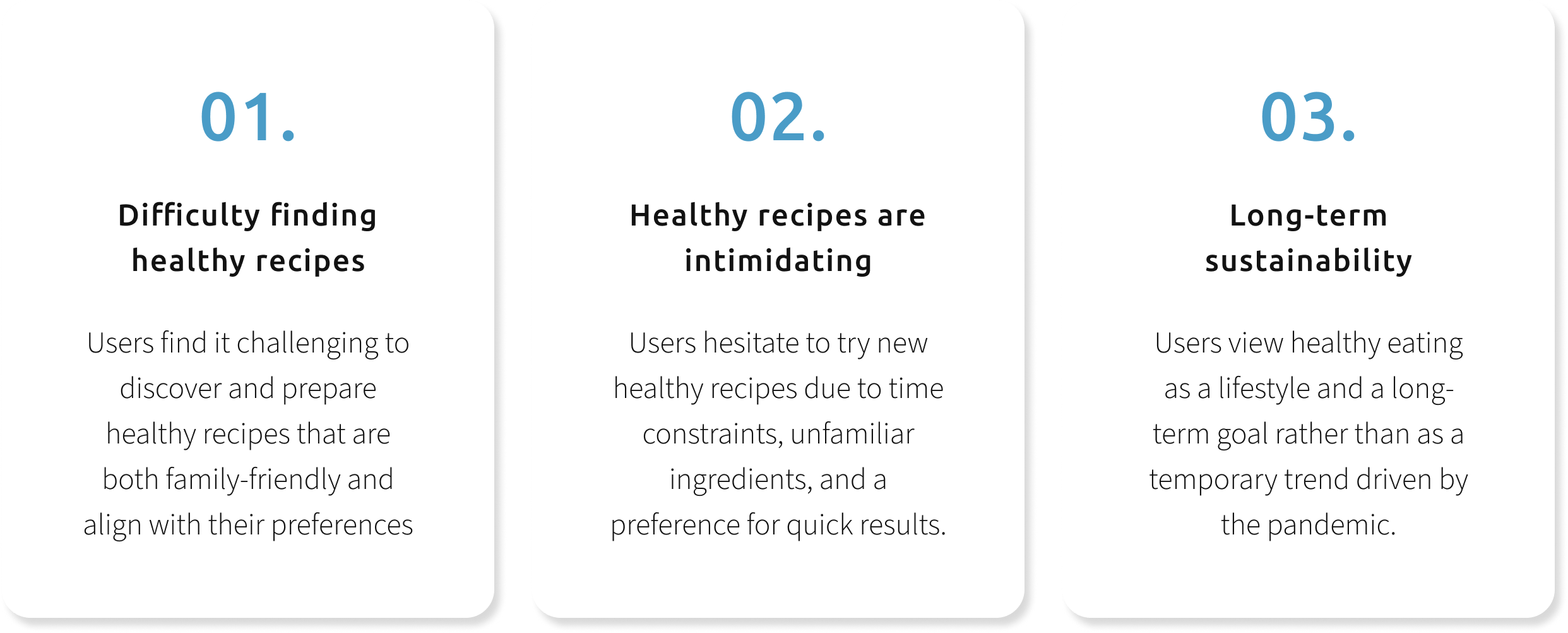
Vision Hypothesis
A Yummly healthy eating program can help users adapt and sustain a healthier lifestyle by recommending healthier alternatives and creating a structured, personalized meal plan with progress tracking.
Business Metrics
Together with the product director, we aligned the business metrics of this feature to the broader company goals.

User Journey Mapping
After picking a product direction to explore, I created a user journey map to empathize with thoughts and emotions each step of the way, which helped ideate potential opportunities that the program can offer.

Concept Iteration & Testing
I spent about three days creating several low-fidelity wireframes for the feature. Along with the product director, we made some minor adjustments and settled on a single prototype. Using guerrilla testing with Yummly users, everyone found the idea interesting and expressed enthusiasm about wanting to see and use it.
Vision Strategy
I gained approval from the rest of the stakeholders, including the CEO and CTO, by presenting a product vision strategy that focused on the following points:
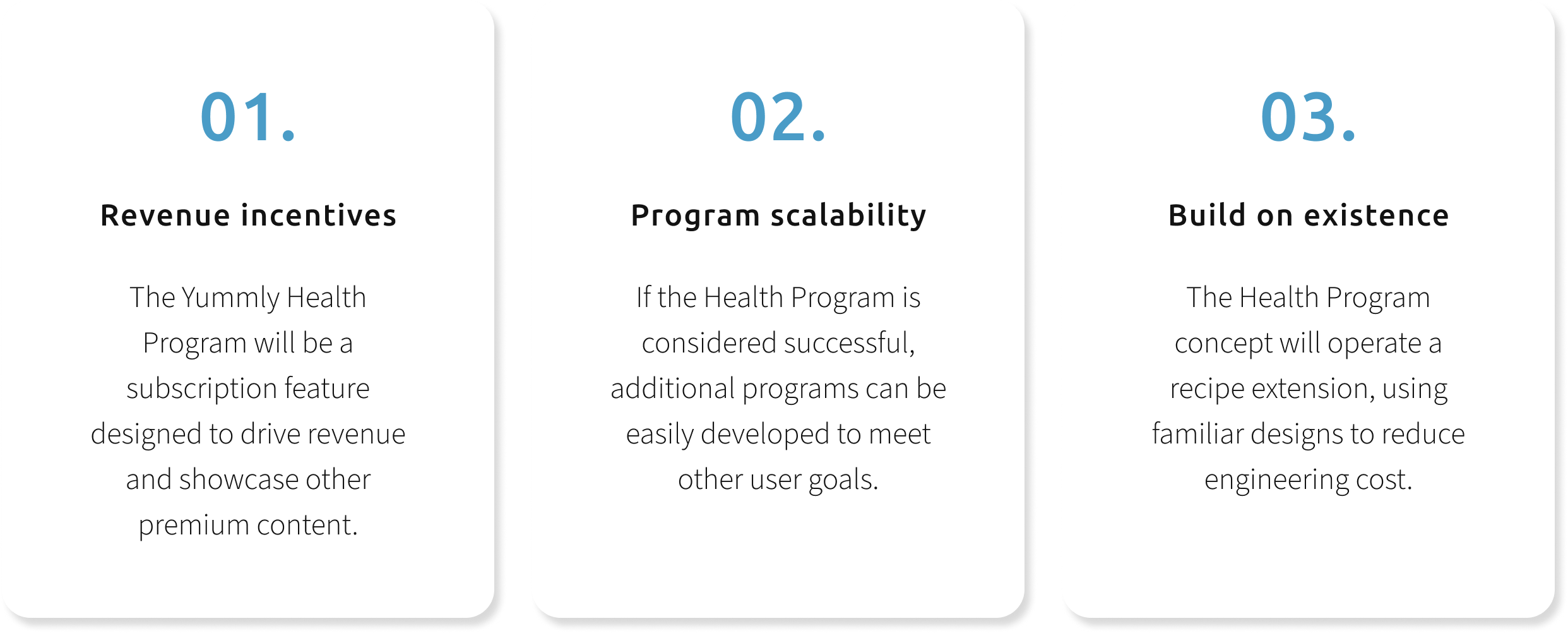
Key UX Ojectives
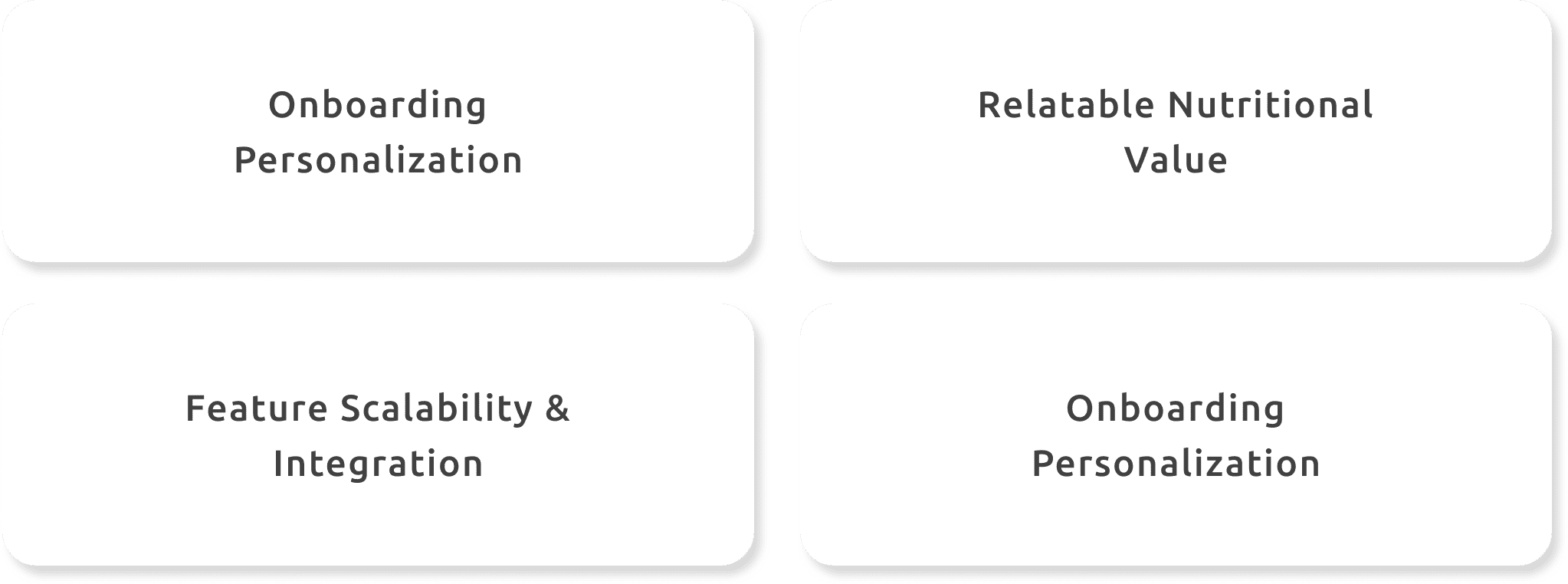
Ideation - Onboarding Personalization
The onboarding process for the new program needs redesigning to ensure scalability, with a focus on collecting users' data regarding their goals, such as saving time, saving money, and learning new cooking skills.
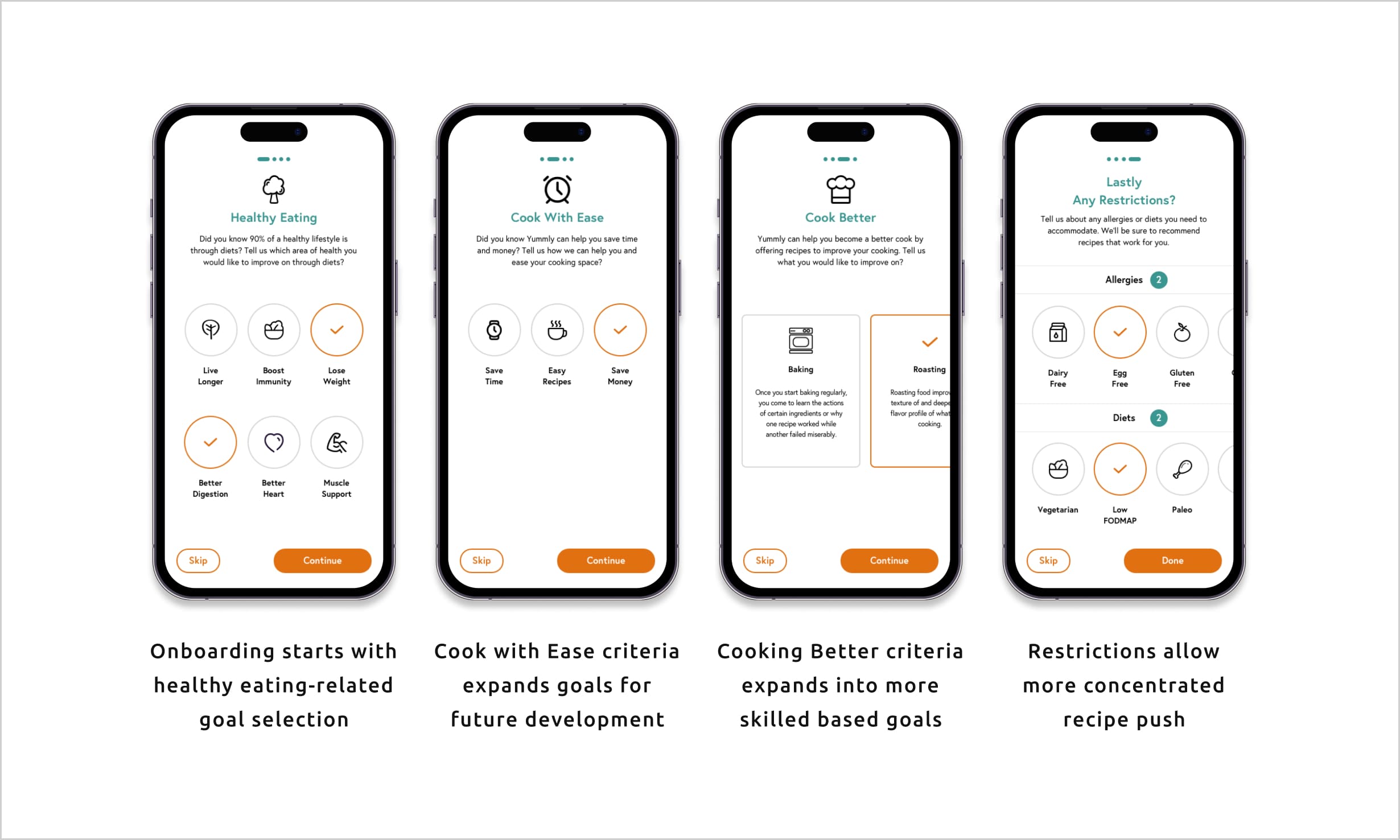
Ideation - Relatable Nutritional Value
The idea of relatable nutritional value aims to reduce nutritional novelty, helping users better understand the recipe's value in regard to their goals.

Ideation - Feature Scalability & Integration
Integrate the program experience with the existing Meal Planner feature to enhance production efficiency and reduce costs. The experience must also support scalability, allowing users to choose multiple programs.
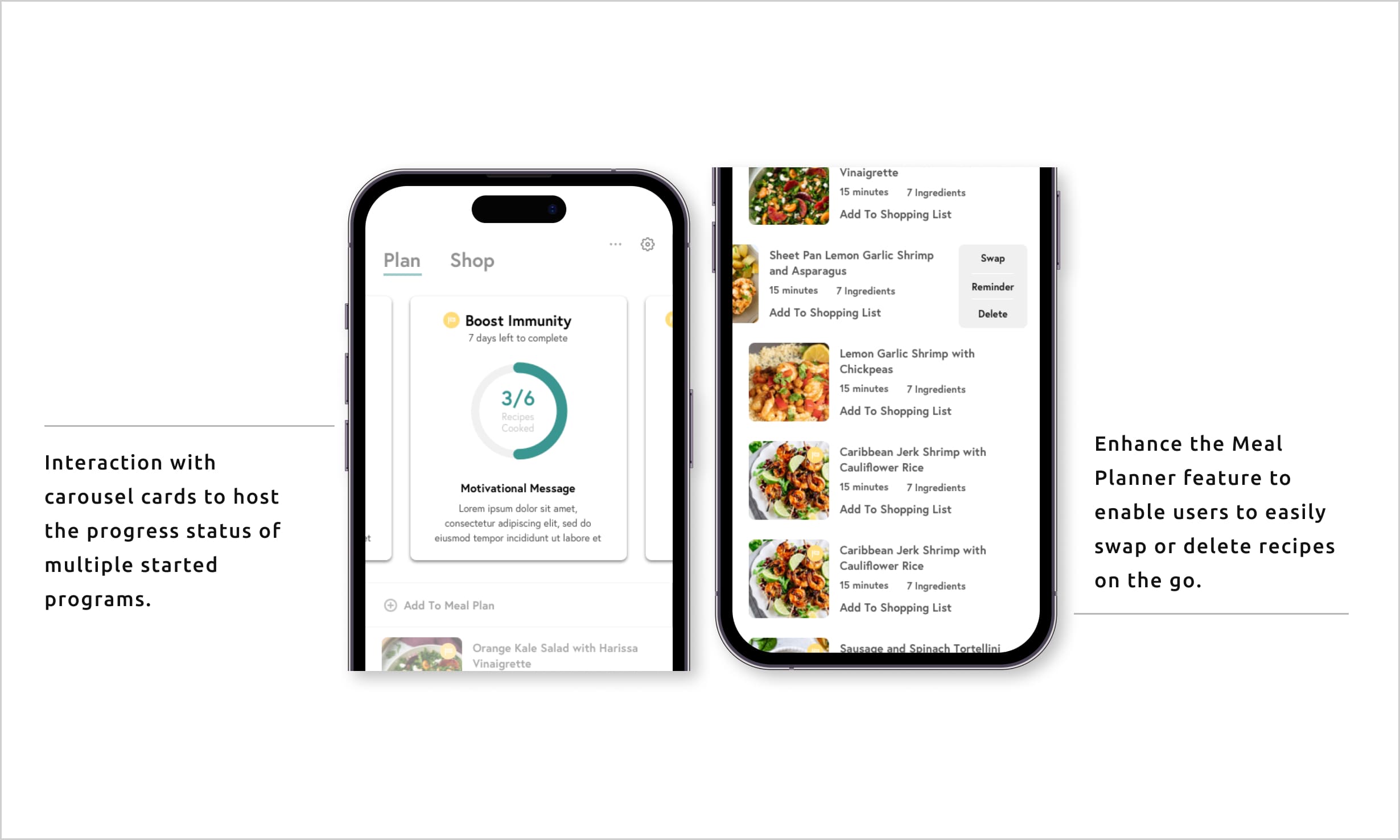
Ideation - Motivational Mechanic
After collaborating with a psychologist on intrinsic motivation, I developed a series of pop-up UIs designed to encourage users to complete a program and worked with both engineers and users to establish the rhythm of implementation.
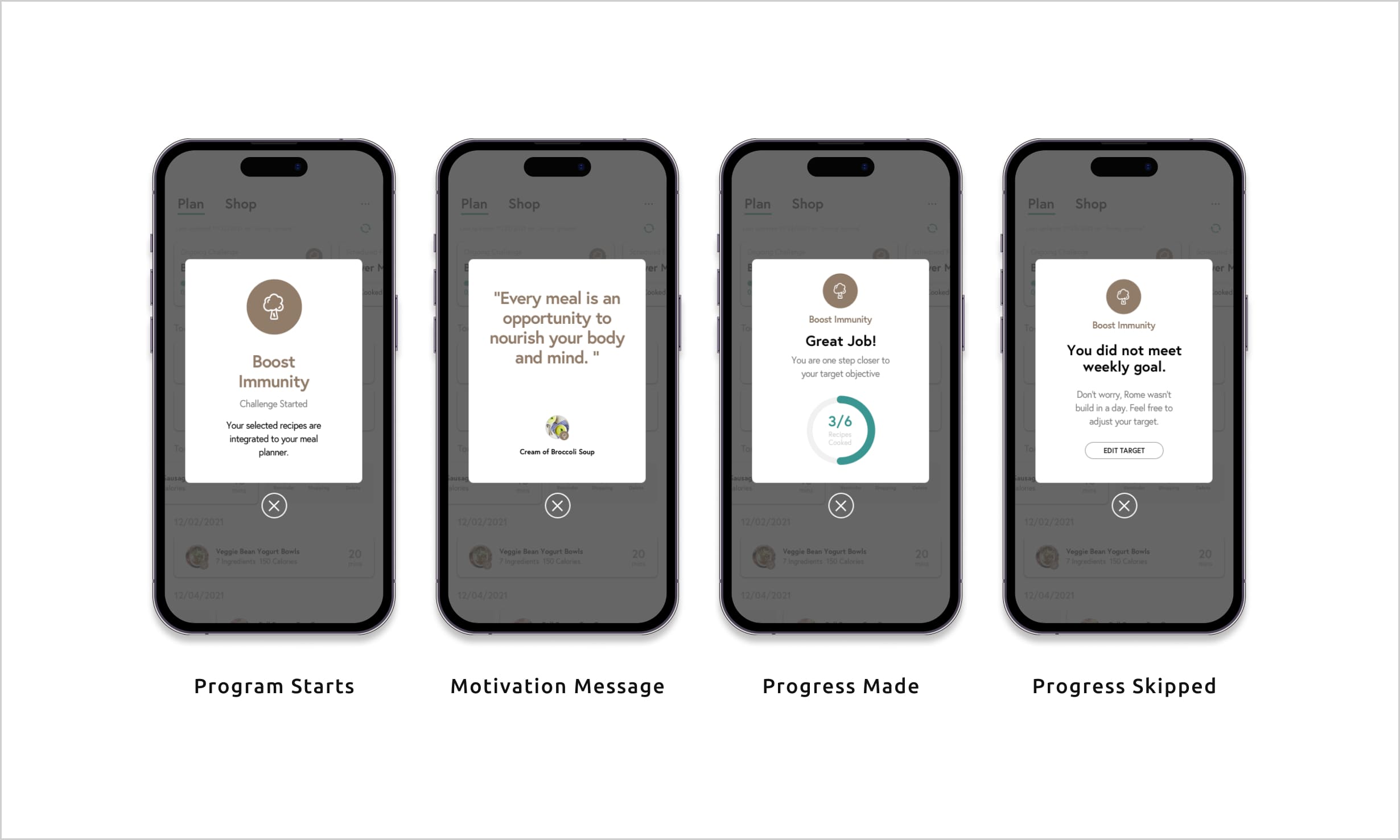
Final Prototype
Data Performance

Conclusion
This program not only generated significant user interest but also validated the potential of a structured, goal-oriented experience. Leadership embraced the concept, expanding it into other categories like “Saving Time” and “Saving Money” to appeal to a broader audience.